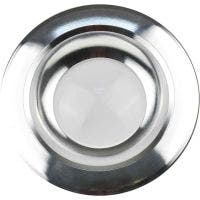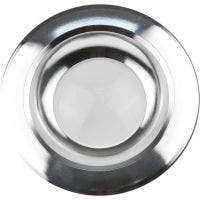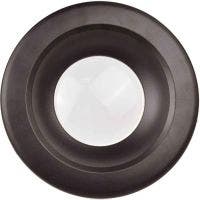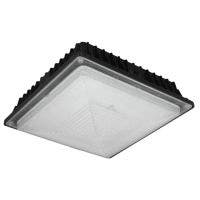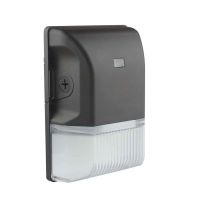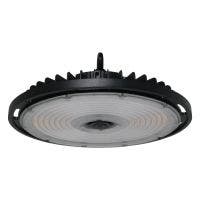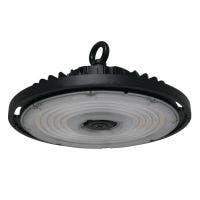LED Downlights
LED downlights – also called can lights – are your go-to indoor lighting option for residential applications, like living rooms and kitchens, and commercial spaces, such as schools and corporate offices. Shop our UL/ETL listed fixtures today.
- New
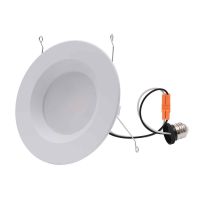 NaturaLED® | 1100 Lumens | RL Series 6-inch LED Downlight Retrofit | 14W | 3000K | E26 Adaptor Included | 120v | White$10.99New
NaturaLED® | 1100 Lumens | RL Series 6-inch LED Downlight Retrofit | 14W | 3000K | E26 Adaptor Included | 120v | White$10.99New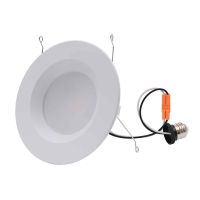 NaturaLED® | 1100 Lumens | RL Series 6-inch LED Downlight Retrofit | 14W | CCT Selectable | E26 Adaptor Included | 120v | White$16.99New
NaturaLED® | 1100 Lumens | RL Series 6-inch LED Downlight Retrofit | 14W | CCT Selectable | E26 Adaptor Included | 120v | White$16.99New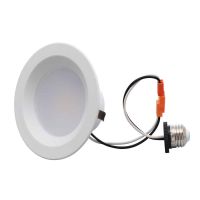 NaturaLED® | 550 Lumens | RL Series 4-inch LED Downlight Retrofit | 9W | 3000K | E26 Adaptor Included | 120v | White$9.99New
NaturaLED® | 550 Lumens | RL Series 4-inch LED Downlight Retrofit | 9W | 3000K | E26 Adaptor Included | 120v | White$9.99New NaturaLED® | 750 Lumens | RL Series 4-inch LED Downlight Retrofit | 10W | CCT Selectable | E26 Adaptor Included | 120v | White$15.99
NaturaLED® | 750 Lumens | RL Series 4-inch LED Downlight Retrofit | 10W | CCT Selectable | E26 Adaptor Included | 120v | White$15.99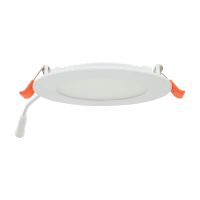 savr® 6-inch Canless LED Recessed Downlight | E-DL Series | 1000 Lumens | 15W | CCT Selectable | White$20.99
savr® 6-inch Canless LED Recessed Downlight | E-DL Series | 1000 Lumens | 15W | CCT Selectable | White$20.99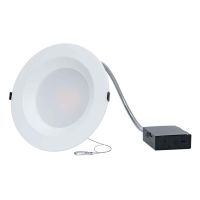 NaturaLED® | Up to 2430 Lumens | CRL Series 8-inch LED Downlight | Up to 27W | CCT & Wattage Selectable | 120v - 277v | White$69.99
NaturaLED® | Up to 2430 Lumens | CRL Series 8-inch LED Downlight | Up to 27W | CCT & Wattage Selectable | 120v - 277v | White$69.99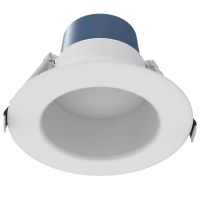 Cree Lighting® 10-inch LED Downlight | CDR10 Series | Wattage & CCT Selectable | Up to 3200 Lumens | White$78.99
Cree Lighting® 10-inch LED Downlight | CDR10 Series | Wattage & CCT Selectable | Up to 3200 Lumens | White$78.99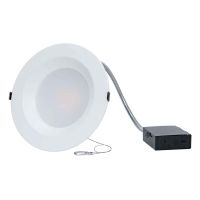 NaturaLED® | Up to 1275 Lumens | CRL Series 6-inch LED Downlight | Up to 15W | CCT & Wattage Selectable | 120v - 277v | White$59.99Clearance
NaturaLED® | Up to 1275 Lumens | CRL Series 6-inch LED Downlight | Up to 15W | CCT & Wattage Selectable | 120v - 277v | White$59.99Clearance C-Lite Premium LED 6-inch Downlight Retrofit Kit | C-DL6-A Series | 650 Lumens | 3000K or 4000K | White$3.77 - $4.77
C-Lite Premium LED 6-inch Downlight Retrofit Kit | C-DL6-A Series | 650 Lumens | 3000K or 4000K | White$3.77 - $4.77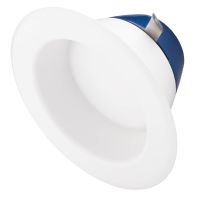 Cree Lighting® PRO Series 4-inch Downlight | CR4T Series | 10.5W | DimmableOOS$12.50
Cree Lighting® PRO Series 4-inch Downlight | CR4T Series | 10.5W | DimmableOOS$12.50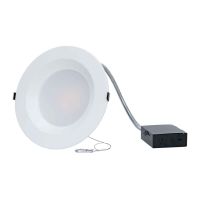 NaturaLED® | Up to 2700 Lumens | CRL Series 10-inch LED Downlight | Up to 30W | CCT & Wattage Selectable | 120v - 277v | White$92.99Clearance
NaturaLED® | Up to 2700 Lumens | CRL Series 10-inch LED Downlight | Up to 30W | CCT & Wattage Selectable | 120v - 277v | White$92.99Clearance Cree Lighting® PRO Series 6-inch Gimbal LED Downlight | CR6T Series | 1600 Lumens | WhiteOOS$11.97 - $20.97
Cree Lighting® PRO Series 6-inch Gimbal LED Downlight | CR6T Series | 1600 Lumens | WhiteOOS$11.97 - $20.97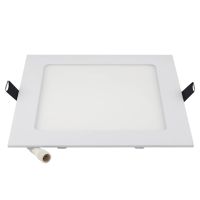 Cree Lighting ® 8-Inch Square Slim Recessed LED Downlight | SDS Series | CCT Selectable | 22W | 2070 Lumens | White$41.99
Cree Lighting ® 8-Inch Square Slim Recessed LED Downlight | SDS Series | CCT Selectable | 22W | 2070 Lumens | White$41.99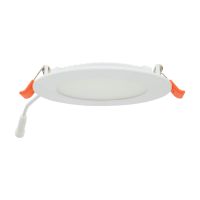 savr® 4-inch Canless LED Recessed Downlight | E-DL Series | 600 Lumens | 7W | CCT Selectable | White$13.99Clearance
savr® 4-inch Canless LED Recessed Downlight | E-DL Series | 600 Lumens | 7W | CCT Selectable | White$13.99Clearance Cree Lighting® PRO Series 6-inch Gimbal LED Downlight | CR6T Series | 825 Lumens | WhiteOOS$7.97 - $17.97Clearance
Cree Lighting® PRO Series 6-inch Gimbal LED Downlight | CR6T Series | 825 Lumens | WhiteOOS$7.97 - $17.97Clearance Cree Lighting® PRO Series 6-inch Gimbal LED Downlight | CR6T Series | 1100 Lumens | 3500K | White$9.97
Cree Lighting® PRO Series 6-inch Gimbal LED Downlight | CR6T Series | 1100 Lumens | 3500K | White$9.97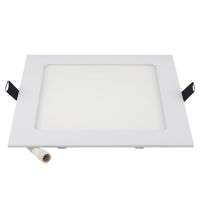 Cree Lighting ® 4-Inch Square Slim Recessed LED Downlight | SDS Series | CCT Selectable | 12W | 830 Lumens | White$23.99
Cree Lighting ® 4-Inch Square Slim Recessed LED Downlight | SDS Series | CCT Selectable | 12W | 830 Lumens | White$23.99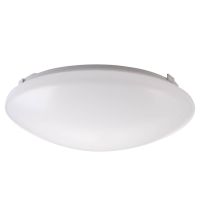 NaturaLED® LED Round Puff Surface Mount | 7 Series | 16-inch | 3000K | White$42.99
NaturaLED® LED Round Puff Surface Mount | 7 Series | 16-inch | 3000K | White$42.99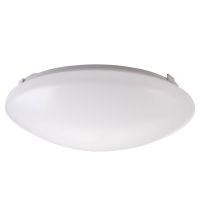 NaturaLED® LED Round Puff Surface Mount | 7 Series | 16-inch | 4000K | White$42.99
NaturaLED® LED Round Puff Surface Mount | 7 Series | 16-inch | 4000K | White$42.99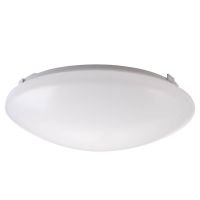 NaturaLED® LED Round Puff Surface Mount | 7 Series | 16-inch | 5000K | White$42.99Clearance
NaturaLED® LED Round Puff Surface Mount | 7 Series | 16-inch | 5000K | White$42.99Clearance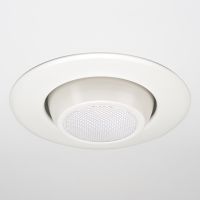 Cree Lighting® PRO Series 6-inch Gimbal LED Downlight | CR6T Series | 1100 Lumens | 3000K | White$9.97
Cree Lighting® PRO Series 6-inch Gimbal LED Downlight | CR6T Series | 1100 Lumens | 3000K | White$9.97Recessed Downlights
Each of these LED downlights have been thoroughly tested by third-party UL certified labs. Meaning, you’re guaranteed to get the best bang for your buck, with LED downlights that won’t fail or break when your customer needs them most. And, since LED downlights are more efficient than traditional incandescents and fluorescents, your customer will save up to 85% on energy consumption. Speaking of which, many of our products are ENERGY STAR® certified, dimmable, and promised to last at least 35,000 hours.
Need an affordable 4 inch LED recessed downlight? You got it. Just click “4 inch” over on the left-hand side, under Subcategory or Size. We’ve also got 5 inch and 6 inch versions, available in different shapes, color temperatures, lumens, and watts, depending on your needs.
Don’t take our word for it; check them out for yourself. You can thank us after your first easy install. And if you need more info, check out our recessed lighting guide.
FAQs
Are LED downlights good for outdoor use?
Whether you’re using LED downlights for indoor or outdoor use, they offer an average lifespan of 50,000 hours and will save you a good chunk of money on your electric bill each month.
How to choose an LED recessed downlight beam angle?
The average height of a ceiling is about 8 to 9 feet. Use a 60-degree beam angle or more for LED recessed downlights. If your ceiling is taller than standard, use a 45-degree or less beam angle for LED downlights.
Can you regulate the intensity of LED downlights?
Yes, you can regulate the intensity of LED downlights. Just make sure you purchase a dimmable downlight. This will let you control the level of light that comes through.
How Many Downlights Do I Need?
The number of LED downlights needed for a space depends on several factors, including room size, ceiling height, beam angle, and the level of brightness desired. A general rule of thumb is to calculate the total lumens required by multiplying the room’s square footage by 1.5 (for general lighting) or by 2.5 (for task lighting). Then, divide this total by the lumen output of your chosen LED downlight.
For example, if your room is 10x10 feet (100 square feet), the total lumens needed for general lighting would be approximately 150 lumens per square foot × 100 = 15,000 lumens. If you choose LED downlights with a brightness of 1,500 lumens each, you would need 10 LED downlights to achieve adequate illumination.
Other considerations, such as dimmability, fixture spacing, and room function, may also impact the ideal number of downlights. For a more precise calculation tailored to your space, use our Lighting Layout Tool.
What’s the Difference Between Downlights and Spotlights?
The difference between downlights and spotlights is that downlights are installed inside the ceiling to direct light straight down, either mounted or recessed. Spotlights are fastened to the wall or ceiling, and can also be mounted in the ground outdoors, where you have more control of where the light hits and can have multiple streams of light.


